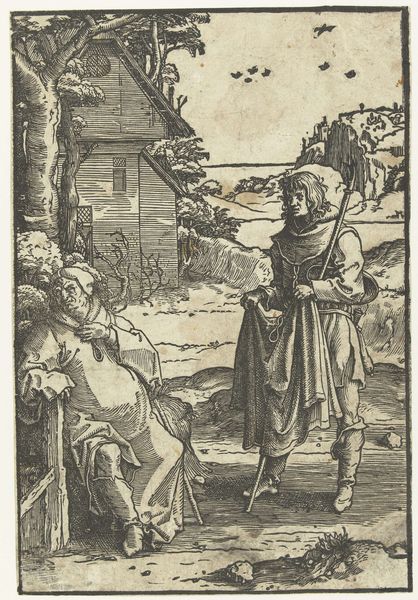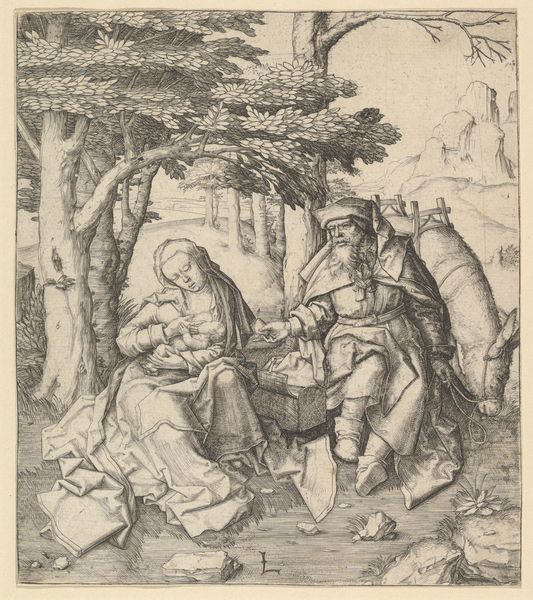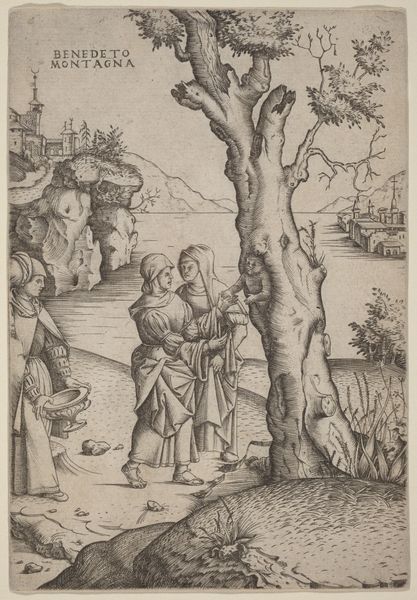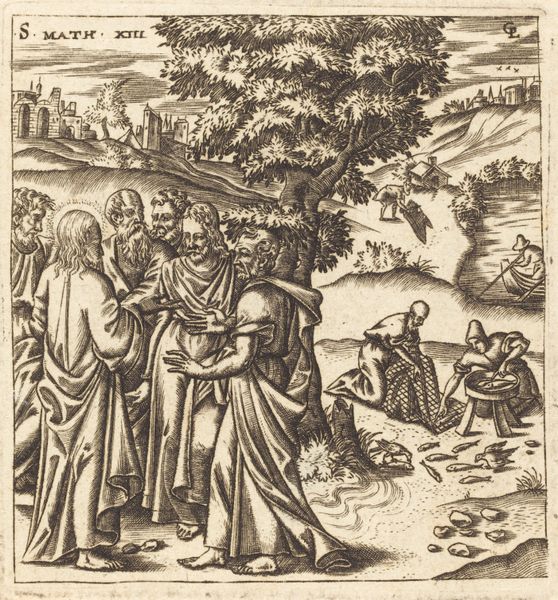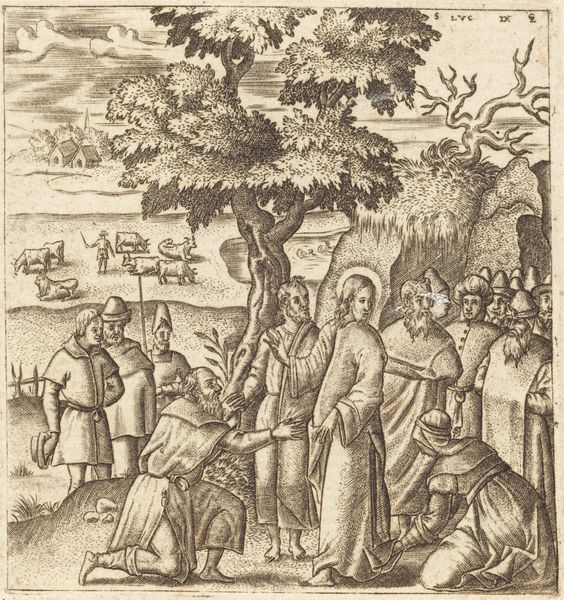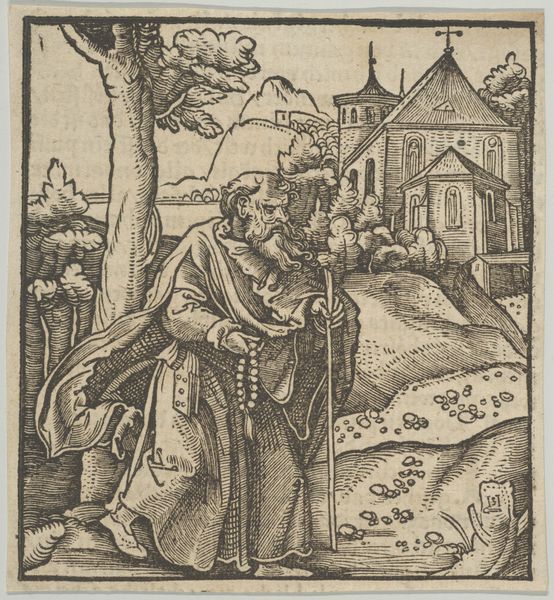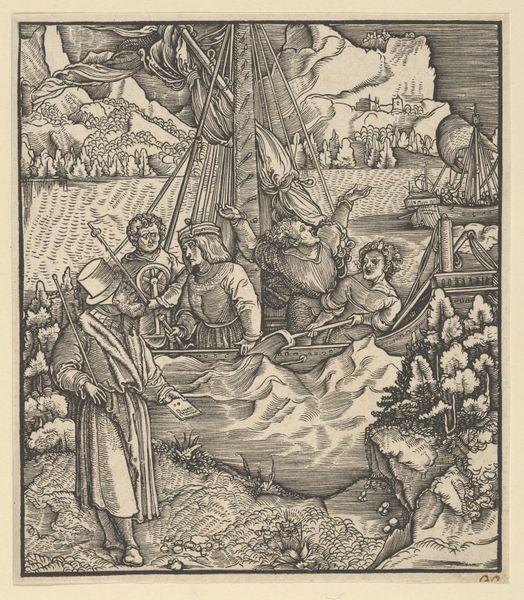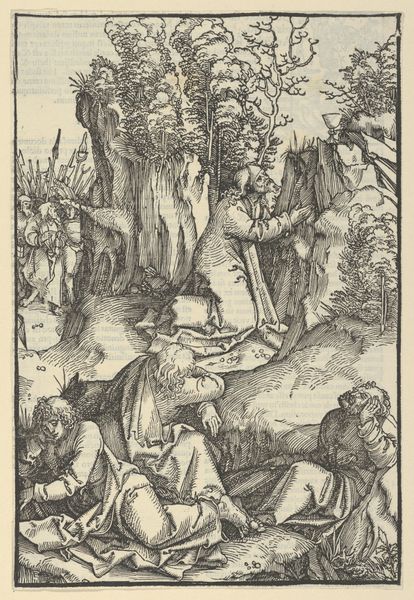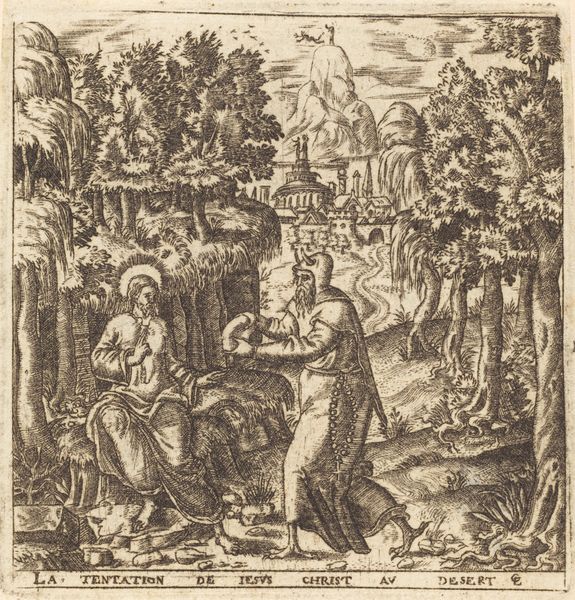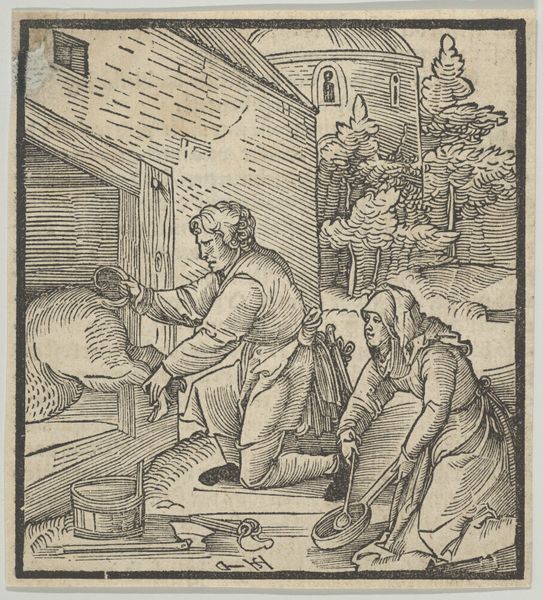
drawing, print, ink, woodcut, pen
#
drawing
#
narrative-art
# print
#
pen illustration
#
sketch book
#
landscape
#
figuration
#
ink
#
woodcut
#
pen
#
northern-renaissance
Dimensions: height 128 mm, width 98 mm
Copyright: Rijks Museum: Open Domain
Editor: We're looking at Albrecht Durer's "The Schoolmaster," a pen, ink, and woodcut piece from 1510. I’m struck by the contrast between the detailed figures in the foreground and the more abstracted landscape behind. What's your take on this, from a historical perspective? Curator: Durer was deeply interested in representing the world around him, but his work was also very much informed by the socio-political environment. Consider the rising literacy rates at the time and the shift in power from the church to secular institutions. How do you think this piece might be engaging with those societal changes? Editor: Well, you've got the schoolmaster as the central figure, rather than, say, a religious icon, so maybe it's saying something about the growing importance of education and humanism? Curator: Precisely! And consider the visual construction: Durer is placing the figure of the teacher in a formal composition. The institution of learning itself is being elevated to a point of social and political prominence. And the use of print – making it accessible to a wider audience – speaks volumes about the democratization of knowledge. Do you find any hints of criticism or satire here? Editor: Perhaps in the teacher’s rather severe expression? Maybe Durer's commenting on the potentially stifling aspects of formal education. Curator: Indeed! By embedding the school scene within this organized landscape and contrasting his figure's expressions, Durer subtly critiques this emerging institution. The 'schoolmaster' becomes a mirror reflecting shifting cultural values. Editor: That makes me see it differently! I was so focused on the artistic skill, but now I realize how much it says about society at the time. Curator: Absolutely! Art isn’t just about aesthetics; it's a historical document reflecting the dynamic interplay between power, knowledge, and society.
Comments
No comments
Be the first to comment and join the conversation on the ultimate creative platform.
